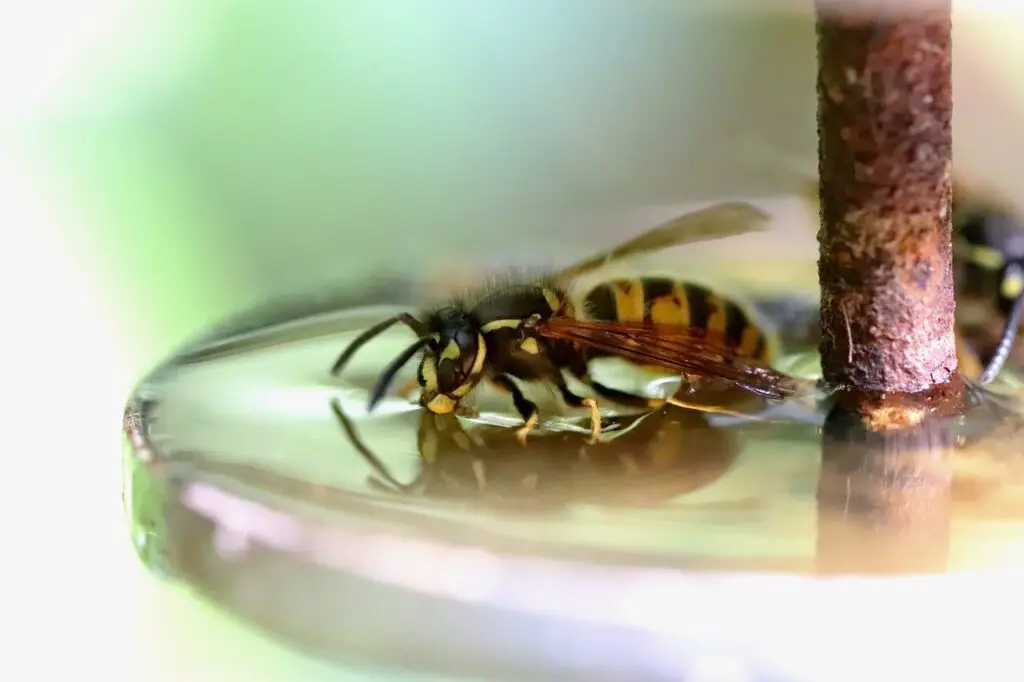You have a few drinks with your buddies on your deck or a family BBQ when a bunch of annoying buzzing guys comes to destroy this occasion. You haven’t seen them all summer long, and all of a sudden, everyone is upset; they’re in a panic. You were waving your arms around like a helicopter against the buzzing visitors – the common wasp.
Always arriving in August and September, you may have wondered, “What is the point of this interruption? Why now?” You might be surprised by the response.
What We Will Cover
Many Different Types of Wasps and Hornets

Were you aware there are around 9,000 species of wasps? These include parasites, some of which are so small that they are like pinheads. Of the 250 more giant wasps, the bulk is single and solitary and does not annoy people.
But when we talk about wasps, we almost probably mean the nemesis of our nation, the Common Wasp (Vespula vulgaris). You first have to understand their life cycle to see why these flying yellow-striped bugs are especially unpleasant this time of year. These bugs are also called hornets in some areas of the United States.
Common wasps are like bees socially, but, in contrast to honey bees, storing food has not been developed to make the colony survive the winter. Indeed, only young fertilized queens who spend the winter sleeping are surviving. Then, in the spring, she emerges to make nests of walnut-size, where she has laid about 20 eggs.
What Does A Hornet Look Like?

A hornet is a type of insect that belongs to the wasp family. It’s generally larger than a typical wasp, with adult hornets measuring up to 2 inches in length. Hornets have a robust body that is usually black, brown, or reddish-brown, often with yellow or orange markings. Their wings are translucent and are held folded longitudinally when at rest.
The head features two large, compound eyes on the sides and three simple eyes on the top. They have two antennae that are relatively short and bent. The mouthparts are adapted for biting and sucking. Hornets have a stinger at the end of their abdomen, which they use for defense and to capture prey.
Hornets are social insects and usually build paper-like nests that hang from trees, shrubs, or even the eaves of buildings. The nests are constructed from chewed wood pulp mixed with saliva.
If you’re interested in learning more about hornets, the University of Michigan’s Animal Diversity Web offers a comprehensive overview.
Life of a Wasp
When they mature and become workers, the Queen feeds the resultant larvae until around May. She then focuses on more egg-laying and provides the workers with expanding the nest as they go.
The Common Wasp Nest

The wasp nest has developed by this time of year to roughly 16 inches in diameter and can have a population of up to 10,000 wasps! The most common spots for a wasp or hornet nest around your home include under the roof eaves, behind shutters, or in garden sheds. A hornet nest is made from chewed wood that gives it its characteristic papery walls, with the exclusion of mud daubers that use clay or muck.
Big Change in Late Summer of the Wasp Colony

Then, there is a significant transition in late August and September. The Queen stops her egg-laying and doesn’t produce the pheromone that makes worker wasps serve(except for some that will be future queens and males to fertilize them).
These workers are essentially made obsolete and left without employment and unoriented. The trouble for us is that while adult wasps are predators of insects, that meat doesn’t feed the larvae itself. This is because Wasps can’t digest solid food, and sugar fluid is needed to survive in adulthood. So now they are wildly and insatiably hungry without larvae to feed.
Wasps like simple foods, overripe fruit, carbonated drinks, and juices. Towards the end of their short lives, their hunger leads them exactly when we will use our gardens and outside areas to devour sweets and look for simple sugar. For them or worse for us, the timing could not be better.
Tips For Dealing With Uninvited Wasps

So why are those who panic and try to swat them more likely to be stung than those who remain calm? The answer is that they have their pheromone, which helps guard the nest against the assault earlier this year, and it’s essentially a chemical cry for other workers to attack.
Then this rallying cry will go off if you swat the furious wasp and feel attacked. Then, suddenly, it all starts, and more wasps will be fired up and ready to defend their nests in aggressive mode. Therefore, keeping calm is the most excellent suggestion.
Think of it this way: from early summer, that wasp has been working its wings off, helping to keep things nice on planet Earth. Now it’s going to die. So why not give it a break, save your swats, put a small plate of ripe fruit and bits of meat somewhere out of your way, and let it go out on a nice sugar rush. At the very least, don’t kill it.
What is the purpose of common wasps? Life would probably not exist without them since our planet would be overwhelmed by further destructive insects such as aphids and caterpillars in the absence of its role as predators.
Video: Safely kill ALL Hornets, Yellow Jackets, and Wasps for 1/2 mile.
Related Reading About The Common Wasp and Other Nature Stories
2 Birds of Prey Spark Interest at the Huron County Nature Center
Medicinal Mushrooms for Dogs – Unveiling Nature’s Superfood and Their Health Benefits



